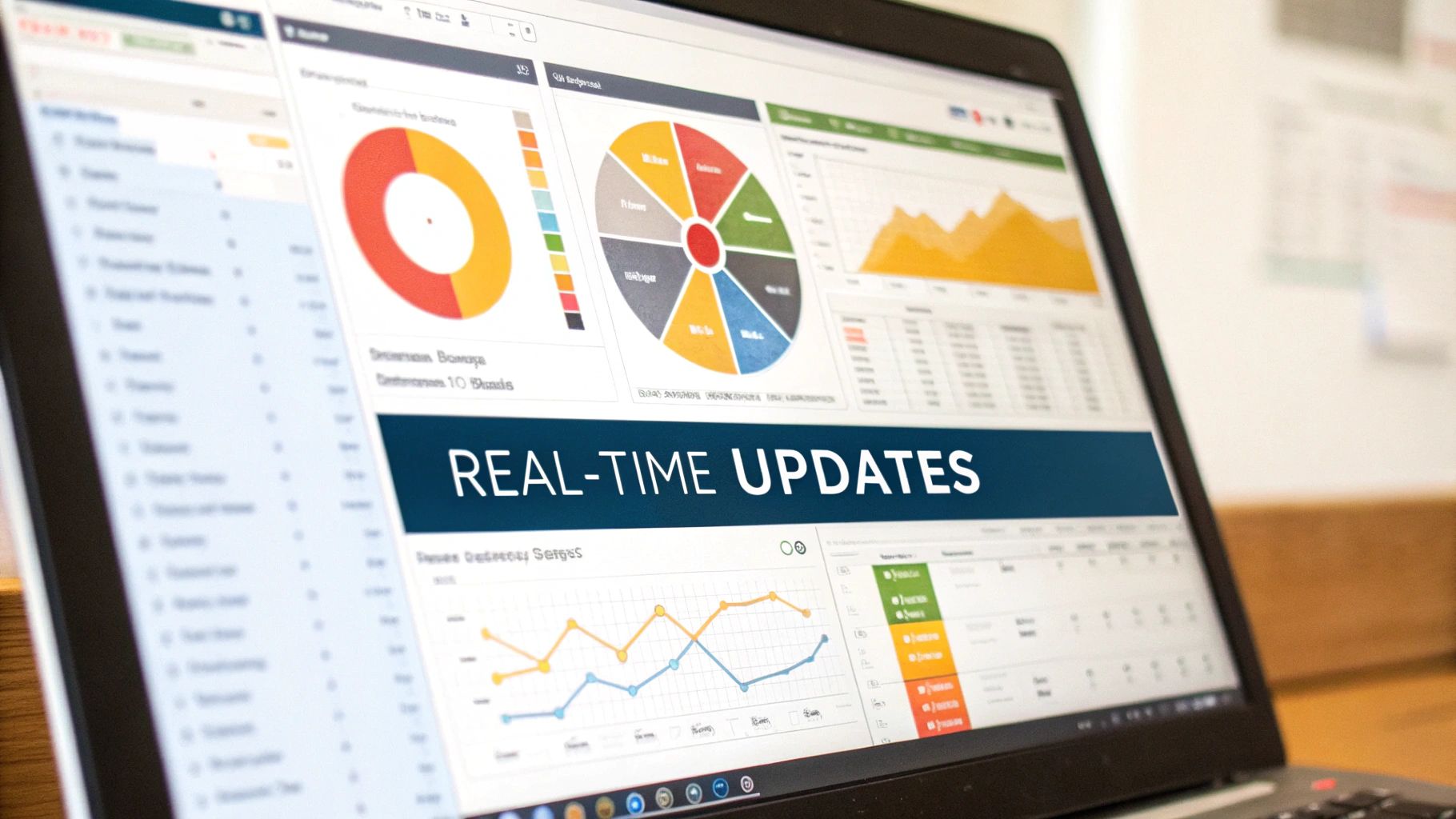From our resource library for organizational scheduling and management.
Law Enforcement Scheduling Software: The Ultimate Guide for Modern Police Agencies

The Evolution of Police Scheduling: Breaking Free from Paper-Based Chaos

Police departments have long struggled with basic paper schedules and whiteboards to manage their workforce. These old-school methods led to frequent errors, scheduling conflicts, and major headaches for both officers and admin staff. Managing shift swaps, time-off requests, and overtime tracking became a daily battle that drained resources and created unnecessary stress.
Enter modern law enforcement scheduling software - a practical solution that takes the pain out of workforce management. These digital tools handle many routine tasks automatically, from assigning shifts fairly to tracking overtime hours. Most importantly, they free up valuable time so officers can focus on what matters most: serving their communities effectively.
The shift to digital scheduling has made a real difference in how departments operate. Take PowerTime for example - this software keeps all scheduling data in one place, making it simple to manage schedules and run payroll reports. Staff can check their schedules anytime, from any device. The system includes over 200 reports that help track everything from overtime to certification status. Gone are the days of manual calculations and paper trails.
The mobile features of modern scheduling tools have been a game-changer for officers. They can now view schedules, request time off, and swap shifts right from their phones. This simple improvement has boosted morale and made it easier for departments to respond quickly to staffing needs. Better communication and easier schedule management mean officers spend less time dealing with administrative tasks and more time serving their communities.
Essential Features That Transform Police Operations
Modern police scheduling software offers robust tools that help departments operate smoothly and keep officers engaged. When implemented properly, these systems help maximize resources while ensuring public safety. Here are the key features that make a real difference in daily police operations.
Automated Shift Assignments and Overtime Management
Automated shift scheduling takes the complexity out of managing officer schedules. The system accounts for officer qualifications, availability, and union requirements to create balanced schedules that work for everyone. Smart overtime tracking helps departments spot potential issues early and adjust staffing to prevent burnout. This saves money and helps keep officers fresh and focused.
Compliance Monitoring and Mobile Access
Keeping track of officer certifications and training is simple with automated compliance tools. The system alerts supervisors before certifications expire and helps track required training hours. Officers can now check schedules, request time off, and communicate with their team right from their phones. This direct access helps everyone stay connected and informed. Learn more: How to master police officer scheduling.
Integration Capabilities and Advanced Reporting
Good scheduling software works smoothly with your existing payroll, HR and records systems. This creates one reliable source for all personnel information and helps prevent errors. The reporting tools give you clear insights into staffing patterns, costs, and resource use. These data points help departments make smart decisions about how to use their people and budget effectively.
Real-World Impact and Cost Savings
The benefits of these systems are clear when you look at real examples. One large agency with 8,000 employees and 15 union groups saw dramatic improvements after implementing scheduling software. They cut overtime from 69% over budget to just 2% within three years, saving $8 million in fines. This happened by automating complex schedules, reducing mistakes, and using data to make better decisions. See more details here. Success stories like this show why more departments now view scheduling software as essential for managing resources and maintaining strong public safety standards.
Police Technology Trends: What's New in 2024

Police departments face major changes in technology that affect how they manage their officers and schedules. New software tools bring fresh possibilities but also require careful evaluation. Understanding these developments helps agencies make smart choices that work for their teams and communities.
Smart Systems That Learn and Adapt
Artificial Intelligence (AI) and Machine Learning (ML) are changing how departments handle scheduling. These tools do more than just automate basic tasks - they can study past data about crime patterns and call volumes to suggest the best staffing levels. The systems can spot potential schedule conflicts or compliance issues early, letting supervisors fix problems before they affect operations.
Better Access Through Cloud Technology
More departments now use online scheduling systems that officers can access anywhere. These cloud-based tools grow with the department's needs without requiring expensive equipment upgrades. Officers and supervisors can check schedules and updates from any device, which speeds up decision-making when situations change quickly. The shift toward cloud systems is driving major growth - the law enforcement software market reached $15.65 billion in 2023 and is growing at 11.3% yearly through 2030. Learn more about market trends in the Grand View Research report.
Making Smart Technology Choices
While new scheduling tools offer exciting possibilities, departments need to choose carefully. The key is looking past flashy features to find what really works. Important factors include:
- How well the software works with existing systems
- Training and support quality
- Total costs versus benefits
Successful departments pick tools that solve their specific problems and match their goals. They focus on software that makes schedules work better while keeping officers happy and communities safe. Taking time to consider these factors helps agencies make lasting improvements to their scheduling.
Building Your Implementation Roadmap for Success

Moving to new law enforcement scheduling software takes careful planning to get right. A clear implementation plan helps ensure your department makes a smooth transition. Here's how to map out your journey to better scheduling.
Assessing Department Needs
Start by taking a close look at how scheduling works in your department right now. What specific problems do you need to fix? Maybe you're having trouble keeping overtime under control, making sure shifts are distributed fairly, or keeping track of officer certifications. Understanding these pain points will help you pick the right software and plan how to roll it out effectively.
Securing Buy-In
Getting everyone on board - from patrol officers to leadership - makes all the difference. Be upfront about how the new scheduling system will make their jobs easier and listen to their concerns. When people feel included in the decision, they're more likely to embrace the change and help make it successful.
Managing Change Effectively
Bringing in new software means big changes for everyone involved. Make sure to provide thorough training and keep support readily available throughout the transition. Set up clear ways for people to ask questions and raise concerns. When you stay ahead of potential issues, the switch to the new system goes much more smoothly.
Training and Adoption
Use a mix of training approaches to help everyone learn the system well. Offer both hands-on practice sessions and online guides, and make sure help is always available when needed. The more comfortable people feel using the software, the more value you'll get from it. Looking at market trends, police scheduling solutions are part of a growing field - the public safety software market is projected to reach $36.47 billion by 2030, with 10.5% yearly growth. Learn more about this growth trend here.
Overcoming Resistance
Some pushback is normal when making big changes. Focus on showing how the new system helps officers feel better about their schedules, cuts down on paperwork, and helps the department run better. Share examples of other police departments that have successfully made similar changes. You might also find helpful insights in our guide about emergency staffing solutions.
Measuring Success: From Implementation to Optimization
Making your police department's transition to scheduling software successful requires careful tracking and measurement. The key is looking at concrete numbers and feedback to see what's working and what needs adjustment. Let's explore how departments can measure success and keep improving their scheduling processes.
Key Performance Indicators (KPIs) for Scheduling Software
To understand if the software is delivering results, departments need clear metrics. Here are the essential numbers to track:
- Overtime Spending: Compare overtime costs before and after the software implementation to see actual dollar savings
- Emergency Response Speed: Monitor if better scheduling leads to faster response times
- Officer Satisfaction: Use regular surveys to check how officers feel about the new system
- Schedule Problems: Track how often shifts are double-booked or understaffed
- Admin Time: Measure how many hours staff spend on scheduling tasks
Using Data Analytics to Optimize Scheduling
Most modern scheduling platforms come with built-in reporting tools that help departments dig into their scheduling data. By looking at patterns in call volumes and types of incidents, departments can match staffing levels to actual needs. This helps ensure enough officers are on duty during busy periods while avoiding unnecessary overtime. The data also shows which shift patterns work best for officer alertness and well-being.
Continuous Improvement and Optimization
Success measurement needs to happen regularly, not just once. Smart departments check their numbers often, study their scheduling data, and stay open to making changes. For example, when officers point out issues with the current schedule, departments can adjust things to work better for everyone. This back-and-forth between data and feedback helps create schedules that work well and keep officers happy. You might be interested in: How to master staff scheduling programs.
Real-World Examples and Metrics
Police departments using scheduling software have seen impressive results. Some have cut overtime costs by more than 50%, saving significant money. Others report better response times and happier officers. These real examples show how law enforcement scheduling software can deliver concrete benefits when departments commit to measuring results and making ongoing improvements. With a focus on numbers and constant fine-tuning, departments can get lasting value from their scheduling system.
Future-Proofing Your Department's Workforce Management

Getting a scheduling system up and running is just the beginning. To get real, lasting value from your law enforcement scheduling software, you need to think beyond today's needs and plan for tomorrow's challenges.
Scaling Your Scheduling System
Your scheduling needs will grow as your department expands. A good system should handle that growth smoothly - whether you're adding new officers or expanding operations. Cloud-based solutions work well here since they can easily scale up data storage and user access. Your system should also let you adjust settings and workflows as your policies change, helping maintain smooth operations as you grow.
Keeping Up With Technology
Technology moves fast in public safety. Your scheduling software needs regular updates to stay current and useful. Look for systems that regularly add new features and work well with other tools. For example, some modern systems use smart analytics to help predict staffing needs based on past patterns. This kind of forward-looking approach helps your department make the most of new tech advances.
Maintaining Operational Excellence
As your department changes, keeping operations running smoothly takes work. Focus on:
- Regular System Checks: Review how well your scheduling software meets your needs and spot areas to improve
- Staff Training: Keep everyone up to speed on system features through ongoing training sessions
- Safety Planning: Have solid backup plans ready for system outages or security issues
Planning for Long-Term Success
Building a scheduling system that lasts requires careful planning:
- Know Your Needs: Map out both current and future scheduling requirements before choosing software
- Get Everyone Involved: Include officers and admin staff in planning to ensure the system works for everyone
- Look Ahead: Consider how your department might grow and change when planning your scheduling approach
A well-planned scheduling system helps your department succeed as needs change. The right software makes it easier to manage schedules, use resources wisely, and keep officers happy with their assignments.
Ready to improve your department's scheduling? Learn more about Acroroster and how it can help future-proof your workforce management.